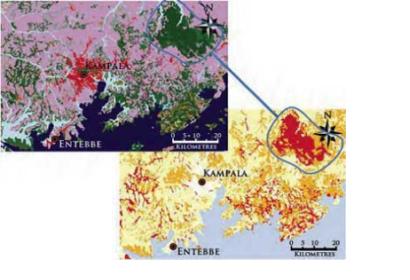Altitude doesn't prevent Earth Observation (EO) satellites from assisting in therapeutic medicine.
Strasbourg, France: Space assets, like telecommunication, location, navigation and remote sensing satellites can play a significant role in preventive and therapeutic medicine on a global scale. Earth Observation satellites are not able to map diseases directly but can monitor the indicators that are associated with disease outbreaks. This information can be processed using mathematical models and augmented by data from ground-based, seaborne and airborne observation systems. Thus, the risk factors of epidemics can be monitored, the spread of diseases can be better predicted and the appropriate preventive measures can be initiated.
On the basis of this, students of the International Space University (ISU) identified 29 infectious and parasitic diseases that can potentially be monitored from space using indicators such as vegetation, wetlands, land surface temperatures, flooding etc.
CEOS, the international Committee on Earth Observation Satellites is supporting applications of Earth Observations to benefit society in various ways, and expressed high interest in this project. CEOS provided valuable inputs in the development phase and to support SHINE with its Systems Engineering Office database.
On behalf of the Italian Space Agency (ASI), current CEOS Chair, Dr. Stefano Bruzzi, explained CEOS interest as follows: “CEOS coordinates civil space-borne observations of the Earth and participating agencies strive to enhance international coordination and data exchange to optimize societal benefits. CEOS is therefore pleased to cooperate with ISU to provide a link between both web-based platforms and, this way, to contribute to the knowledge of these specific health problems. We therefore look forward to the resulting products and will strongly support this collaborative project.” ISU is the world’s leading international space education institution. Each year teams of Master students carry out literature surveys and critical reviews of the subject matter as background preparation for the main Team Project work. Drawing on this background research, students work in their respective teams to collectively identify a focused topic for their main study project.
The project “Space for a Health Information Network on Earth” (SHINE) provides links between the aforementioned 29 diseases, the indicators influencing their outbreak or distribution and the space-borne Earth Observation systems which could be used to monitor these indicators. A continual goal of SHINE is to integrate multiple data systems in order to provide better health care solutions. In order to illustrate this, the case study of the well-known sleeping sickness is described here as an example: Case study: African Trypanosomiasis (sleeping sickness)
Why African Trypanosomiasis?
African Trypanosomiasis, also known as sleeping sickness, is a disease transmitted by tsetse flies. It still plays a major role in limiting the development in the rural regions of Africa, with about 70 million people at risk (source: WHO).
How can space help?
Indicators for African Trypanosomiasis can be related to the type and status of the vegetation and to climatic conditions, such as rainfall, atmospheric temperature and humidity. The indicators are used to identify ecological requirements for tsetse flies habitats. The figure below illustrates the process of identifying the potential presence of vectors in Uganda.

